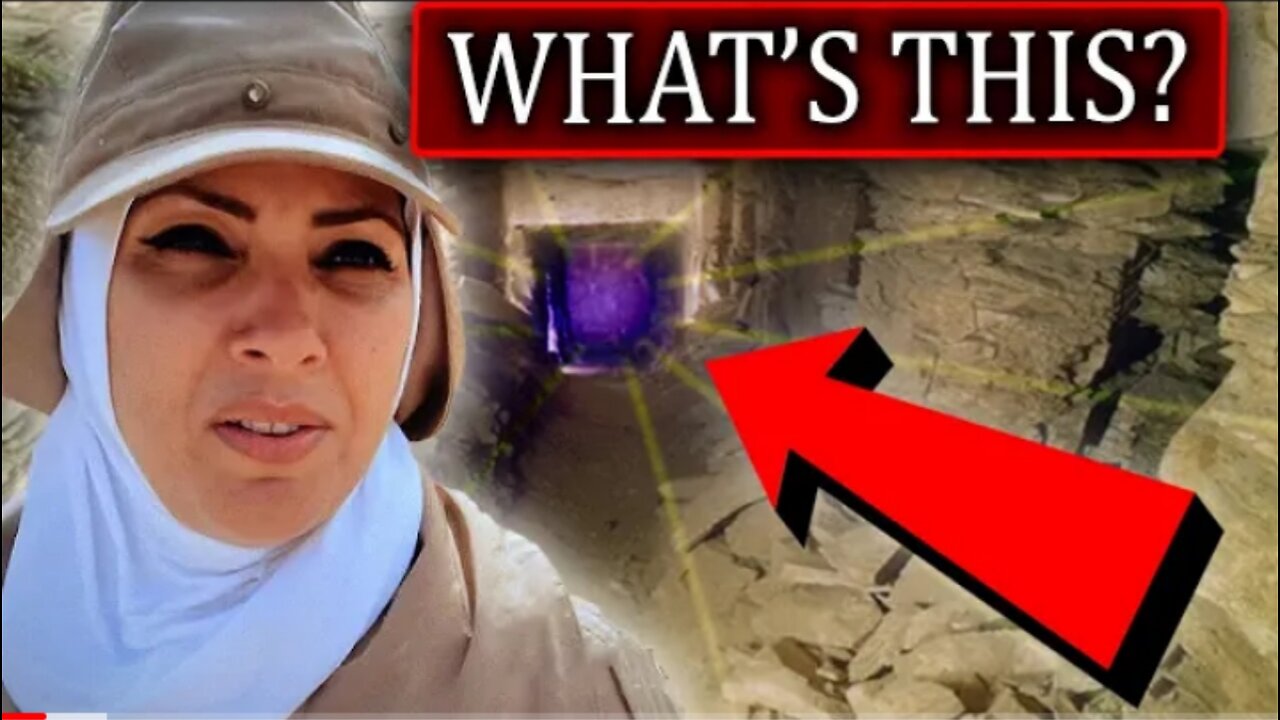Premium Only Content

Exciting Archaeological Finds in Ancient Egypt That Brought Smiles to Scientists But NOT To Us
you're like most people, you probably think of Ancient Egypt as a dusty, ancient civilization. But did you know that there are still plenty of surprises to be found in the land of the Pharaohs? Hello everyone and welcome back to the channel. In this video, we'll take a look at somne of the rarest and
most fascinating discoveries that have been made in recent years. So sit back and enjoy as we explore
some of the most intriguing finds in this ancient land. Let's start with Tomb KV5.
1995 excavations at KV5 uncovered the fact that the little-studied tomb was in fact the biggest tomb that
had ever been built in the Valley of the Kings. The tomb is still being excavated, and as of the most recent report, the archaeologists have discovered 121
passageways and chambers inside it. The experts have said that they believe more than 150 will ultimately be unearthed.
Archaeologists discovered that the tomb was used to inter the pharaoh Ramesses Il's kids at some point in the past. KV5 is believed to have held the remains of at least six sons of royal families. It is possible that there were SO many sons buried in the tomb since there are more
than 20 depictions of sons carved into its walls. Archaeologists working on the Theban Mapping Project detailed their findings in a paper that was
uploaded to the organization's website.
The Emperor of Silver is the next one on our list.
Pierre Montet, an Egyptologist, made the discovery of
Psusennes l's tomb in 1939. Psusennes I was a king
who governed Egypt around 3,000 years ago. Tanis, a
city in the Nile Delta, was the site of his tomb, which
was situated there.
According to what Montet discovered, the pharaoh
was put to rest while wearing a magnificent burial
mask made of gold and was buried in a coffin made
of silver. Due to the fact that Psusennes I was buried
in a silver coffin, he is also known as the "Silver King."
Canopic jars, which were supposed to preserve some
of the pharaoh's organs, and shabti figures, which
were meant to assist the monarch in the afterlife,
were both uncovered, despite the fact that part of the
burial goods did not survive due to the high level of
humidity in the delta.
Now let's talk about the tomb of King Tut.
Due to the fact that the tomb was found towards the
beginning of the Second World War, it did not garner
much notice from the media.
It is possible that the tomb of Tutankhamun, located
in the Valley of the Kings in Egypt, is the most famous
archaeological discovery that has ever been made.
The tomb was discovered in 1922 by a team headed
by Howard Carter, and it had a wonderful collection of
artifacts, one of which was Tutankhamun's death
mask, which is regarded as almost a symbol in
modern culture.
Carter entered the tomb on November 26, 1922. As he
struggled to describe the wonders he saw that day, he
wrote in his diary, "As one's eyes became accustomed
to the glimmer of light, the interior of the chamber
gradually loomed before one, with its strange and
wonderful medley of extraordinary and beautiful
objects heaped upon one another." In other words, "the
Tutankhamun somnetimes referred to as the young
king, passed away while he was only a teenager.
According to the findings of the examination of his
remains, he had a number of different health issues
and walked with the assistance of a cane.
He spent a significant portion of his reign
approximately 1332 B.C. to 1323 B.C. attempting to
restore Egypt's traditional polytheistic religion. This
was something that had been disrupted when his
father, the pharaoh Akhenaten, began a revolution that
placed an emphasis on the primacy of the Aten, the
sun-disc.
After the discovery of Tutankhamun's tomb, there was
a flurry of activity in the media, as well as a notion that
the opening of the tomb had let loose a curse.
extraordinary.
X
The Rosetta Stone, which dates back to 196 B.C. and
contains a decree issued by a council of priests, is
evidence that Ptolemy V, who was just 13 years old
when the decree was made, had the authority to
govern Egypt.
amazing discoveries, ancient, ancient
discoveries, ancient found,ancient
mystery,archaeological,archaeological
The edict was inscribed on the Rosetta Stone in three
different languages: hieroglyphic, Greek, and Demotic.
This is what makes the Rosetta Stone so
discoveries, archaeological finds,discoveries from
ancient egypt,discovery,egyptian secrets,found
recently,incredible discoveries,incredible
finds,mysterious,new discoveries 2022,recent
discoveries,african history,egyptian pyramids,ancient
egypt history,ancient egyptkv5,rosetta stone,pyramid
of giza,pyramid of egypt,papyri,king tut,tutankhamun
-
 2:05:07
2:05:07
Darkhorse Podcast
5 hours agoWhy Trump Wants Greenland: The 257th Evolutionary Lens with Bret Weinstein and Heather Heying
39K83 -
 LIVE
LIVE
Right Side Broadcasting Network
5 hours ago🎅 LIVE: Tracking Santa on Christmas Eve 2024 NORAD Santa Tracker 🎅
1,857 watching -
 2:48
2:48
Steven Crowder
7 hours agoCROWDER CLASSICS: What’s This? | Nightmare Before Kwanzaa (Nightmare Before Christmas Parody)
159K11 -
 LIVE
LIVE
LFA TV
9 hours agoLFA TV CHRISTMAS EVE REPLAY
703 watching -
![ROSEANNE BARR - Her Journey, TRUMP, and the MAGA GOLDEN AGE! [INTERVIEW]](https://1a-1791.com/video/s8/1/M/m/B/2/MmB2v.0kob.1-small-ROSEANNE-BARR-Her-Journey-T.jpg) 51:35
51:35
Dr Steve Turley
1 day ago $9.18 earnedROSEANNE BARR - Her Journey, TRUMP, and the MAGA GOLDEN AGE! [INTERVIEW]
21.6K34 -
 57:38
57:38
The Tom Renz Show
2 hours agoMerry Christmas - The Tom Renz Show Christmas
17.6K1 -
 2:59:10
2:59:10
Wendy Bell Radio
13 hours agoThe Bridge Too Far
117K130 -
 1:03:45
1:03:45
Donald Trump Jr.
1 day agoHappy Festivus: Airing Our Grievances and Stopping The Swamp w/Sean Davis | TRIGGERED Ep.201
391K517 -
 1:30:30
1:30:30
Game On!
16 hours ago $7.08 earnedTop 5 things you need to know for Sports Christmas!
50K3 -
 1:58:10
1:58:10
Robert Gouveia
1 day agoMatt Gaetz REJECTS Report, Sues Committee; Luigi Fan Club Arrives; Biden Commutes; Festivus Waste
276K207